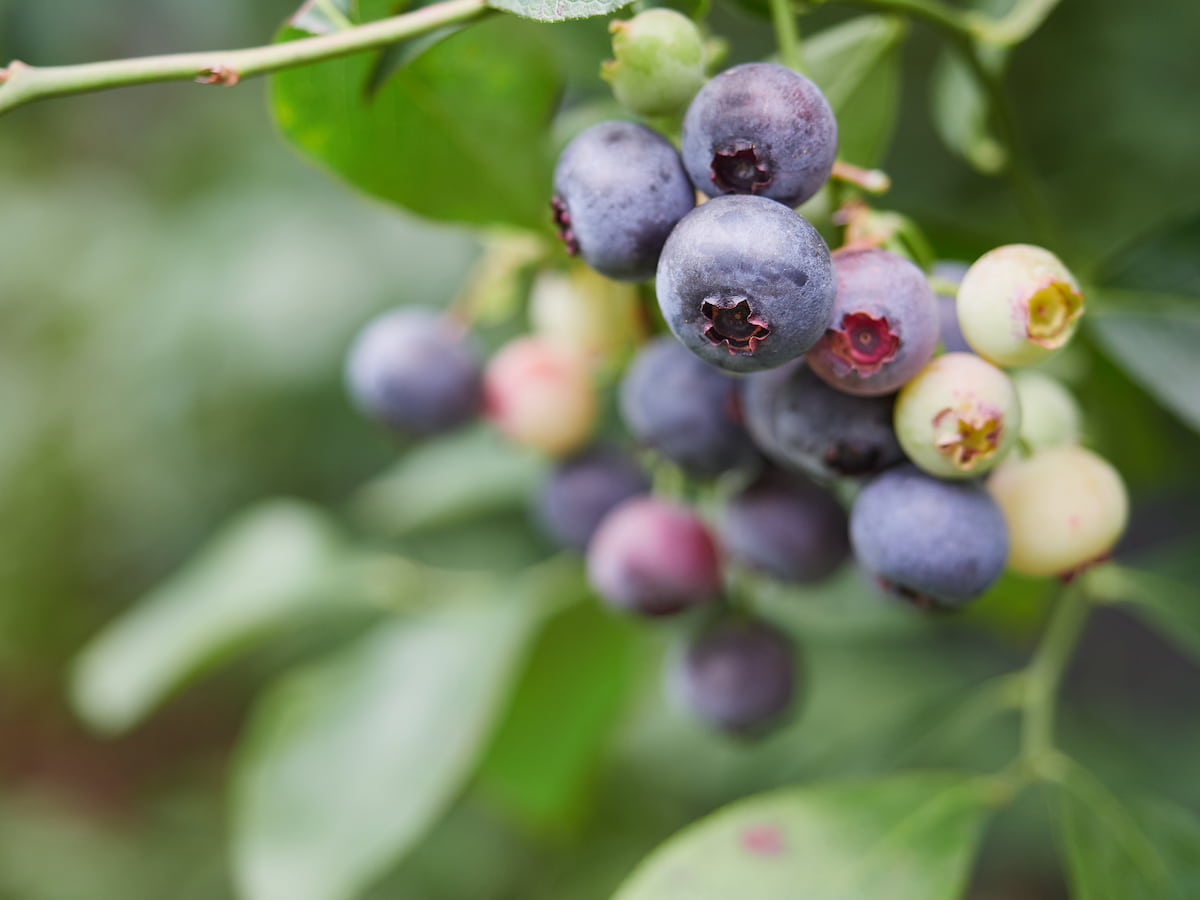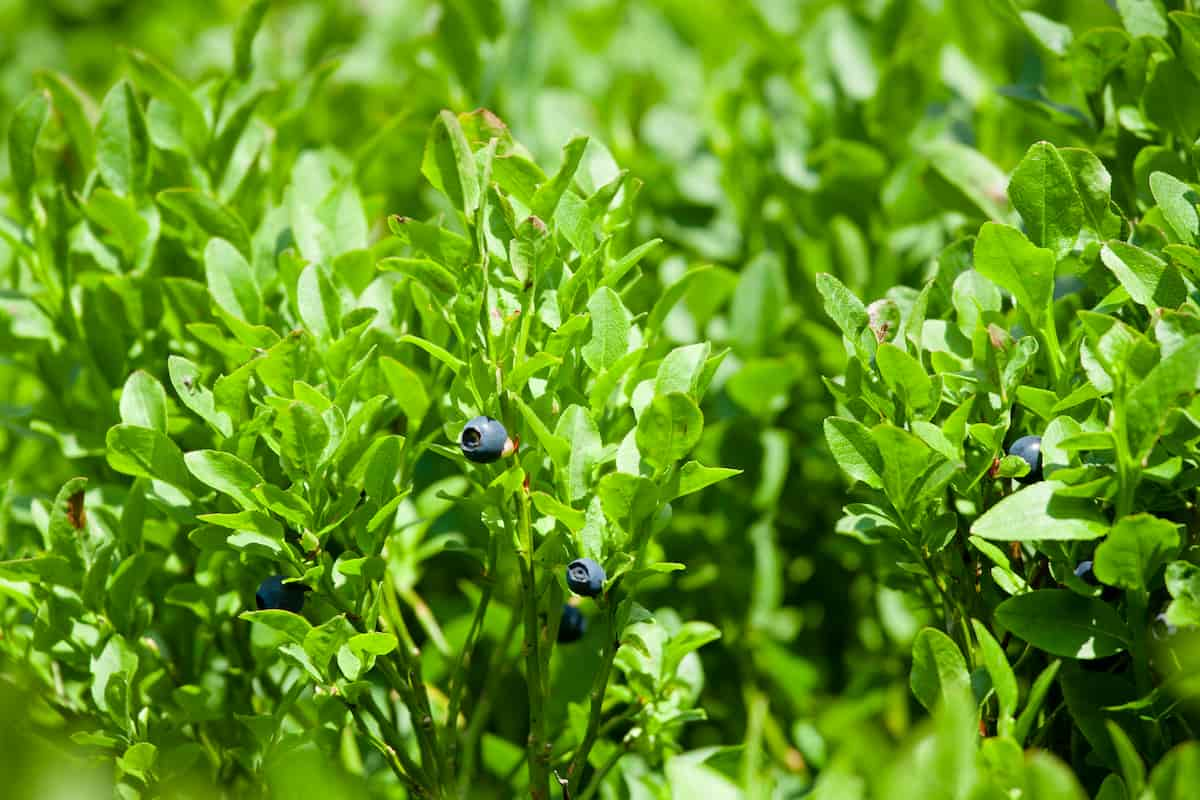Blueberries are one of the world’s finest fruits, and they can be found in a wide variety of food items, from salads to baked foods. They’re loaded full of highly nutritious, containing antioxidants, fiber, and different vitamins and minerals. Factors such as climate, soil type, and intended use can all play a role in determining which blueberry variety will most suit your needs.

In this article, we’ll cover the various factors to consider when choosing blueberry varieties, including climate and hardiness zones, taste and texture preferences, harvest time and yield, and disease resistance. We’ll also provide information on some of the most popular blueberry varieties, their unique characteristics, and tips for growing and caring for blueberries.
How to Choose the Right Blueberry Varieties
What is Blueberry and Benefits
Blueberries are a delectable and nutritious fruit closely related to cranberries, bilberries, and huckleberries. They are a member of the Vaccinium ssp family. They are small, round berries ranging from blue to purple and are about 0.2-0.6 inches in diameter. There are different blueberries, the most common being highbush and lowbush varieties. Blueberries are low in calories and fat but provide a good amount of healthy fiber.
They primarily consist of 14% carbs, 84% water, and small amounts of protein and fat. The carbs in blueberries come from simple sugars like glucose and fructose, but they also contain fiber, which is important for a healthy diet. Blueberries are an excellent source of minerals and vitamins, such as K1, C, and manganese. In addition, they contain small quantities of vitamin E, B6, and copper.
What are the Different Types of Blueberries?
Blueberries come in different varieties and can range from 1 to 12 feet tall. They prefer acidic soil and mature at different times during the summer, so planting different types can extend the harvest window. The five main types of blueberries are Northern Highbush, Southern Highbush, Lowbush, Rabbiteye, and Half-High. Each type has unique characteristics, such as cold hardiness and height at maturity.
While blueberry plants are self-pollinating, cross-pollination is necessary for optimal fruit production. This can only be achieved by planting two different blueberry varieties of the same type—cross-pollination results in more even ripening, larger berries, and a greater yield. Plenty of bees in your yard can also improve the cross-pollination of blueberry plants.
Best Common Blueberry Varieties
Northern Highbush Blueberry Varieties
Northern Highbush blueberry varieties are suitable for colder regions, with plants growing up to 6 or 7 feet tall, making it difficult to harvest the highest berries.
- Duke: Developed by USDA in Maryland, this variety is cold-tolerant and grows in USDA Hardiness Zones 4 to 7. The plant produces large blueberries early in the year, extending the blueberry harvest season.
- Earliblue: Released in 1952, this variety is cold-tolerant and grows in USDA Hardiness Zones 5 to 7. The plant produces medium to large blueberries early in the year, extending the blueberry harvest season.
- Patriot: Introduced in 1976, this variety is cold-tolerant and grows in USDA Hardiness Zones 3 to 7. The plant produces large blueberries early in the year, extending the blueberry harvest season.
- Pink Lemonade: Developed in 1996, this variety is cold-tolerant and grows in USDA Hardiness Zones 4 to 8. The plant produces medium pink berries later in the year; its fruit is pink instead of blue.
- Sweetheart: Developed in 1999 and released in 2010, this variety is cold-tolerant and grows in USDA Hardiness Zones 4 to 8. The plant produces large blueberries early in the year, with a second crop in temperate areas.
Southern Highbush Blueberry Varieties
Southern Highbush blueberry bushes are a great option for gardeners in the southern U.S. due to their heat tolerance.
- Jewel: Partially evergreen, heat-tolerant, and grows in USDA Hardiness Zones 6 to 9. It produces large blueberries after 2 to 3 years.
- Jubilee: Introduced in 1994, heat-tolerant and grows in USDA Hardiness Zones 5 to 9. It produces medium powder-blue berries early in the year (June), extending the harvest season.
- Misty: Introduced in 1989, heat-tolerant and grows in USDA Hardiness Zones 5 to 10. It produces medium to large sky-blue berries early in the year (June).
- O’Neal: Introduced in 1987, heat-tolerant and grows in USDA Hardiness Zones 5 to 9. It produces large blueberries early in the year (June).
- Sunshine: Introduced in 1979, heat-tolerant and grows in USDA Hardiness Zones 5 to 10. It produces medium blueberries a little later in the year (June to July).
In case you missed it: How to Grow Blueberries Organically: A Step-By-Step Guide for Beginners

Lowbush Blueberry Varieties
Lowbush blueberry varieties are also known as wild blueberries and are often grown in Maine and Eastern Canada. They stay short, making it easy for anyone to harvest the berries. Lowbush blueberry varieties are generally hardy and can tolerate cold temperatures. They are easy to grow and can be grown in containers or as ground cover.
- Brunswick: This compact and deciduous variety works well as a ground cover, producing medium blueberries in summer.
- Bushel & Berry Blueberry Buckle: This neat and compact variety is great for container gardening and produces large blueberries early in the summer, extending the harvest season.
- Dwarf Tophat: This very productive variety is perfect for container gardening and produces large dusky-blue berries late in the summer, extending the harvest season.
- Velvetleaf: Also known as Canadian Blueberry, this native variety produces large blueberries later in the year.
Rabbiteye Blueberry Varieties
Rabbiteye blueberry bushes are native to the Southeastern U.S. and grow up to 9 feet tall. They may not fruit consistently in colder regions and are less able to self-pollinate.
- Brightwell: grows upright and open, producing medium blue berries in early June in USDA Hardiness Zones 7 to 9.
- DeSoto: a shorter variety (5-6 feet) that blooms late to avoid late spring frosts, producing large blueberries in late June to early August in USDA Hardiness Zones 6 to 9.
- Ochlockonee is another short variety (5-6 feet) that blooms late and produces large blueberries from July to August in USDA Hardiness Zones 6 to 9.
- Premier: very productive and upright, producing large blueberries in late May to early June, but with increased risk of damage from early spring frosts in USDA Hardiness Zones 6 to 9.
- Vernon: a high-yielding early season producer, growing 6-8 feet tall and wide, with large blueberries in early June in USDA Hardiness Zones 6 to 9.
Half-High Blueberry Varieties
Half-High blueberry bushes are a hybrid of Northern Highbush and Lowbush types, known for their cold hardiness in temperatures as low as -45°F. Half-High blueberry varieties are cold-hardy and grow in USDA Hardiness Zones 3-8. The flowers bloom late, reducing damage risk from early spring frosts.
- Bushel & Berry Jelly Bean: Good for container gardening, grows 1-2 feet tall and wide, and produces large blueberries in late July to early August.
- Chippewa: From the University of Minnesota, grows 3-4 feet tall and wide and produces large blueberries in July.
- Dwarf Northsky: Grows compact with small berries in tight clusters, grows 1.5 feet tall and 2 feet wide, and produces large blueberries in July.
- Dwarf Northblue: Good for growing patio, growing 2-3 feet tall and wide, and producing large blueberries in mid-June.
- Northcountry: Grows 2-3 feet tall and wide and produces small to medium blueberries in late June to early July.
Top Home Grown Blueberry Varieties
Top 10 blueberry varieties to grow at Home: Biloxi, Bluecrop, Blueray, Brightwell, Legacy, Pink Icing, Pink Popcorn, Powder Blue, Sunshine Blue, and Top Hat.
Factors/Tips to Consider When Choosing Blueberry Varieties
- The climate and soil requirements. Blueberries thrive in cool, moist climates and acidic soils with a pH range of 4.5 to 5.5. In warmer climates or with alkaline soil, you may need to add soil amendments or use shade cloth to create suitable growing conditions.
- When selecting a blueberry variety, it’s essential to consider its disease resistance and tolerance to pests. Some varieties may be more vulnerable to common blueberry diseases and pests such as anthracnose, stem blight, and mummy berry.
- Planting: Plant blueberries in the spring or fall, spacing them 4-6 feet apart in rows 8-10 feet apart.
- Pruning: Prune blueberries in the late winter to early spring to remove dead wood, thin out crowded branches, and encourage new growth.
In case you missed it: How to Plant Strawberry Seeds Outdoors: Growing, Care, and Harvest

Conclusion
Several factors, including climate and soil conditions, disease resistance, and desired characteristics, such as fruit size and flavor, influence the choice of blueberry variety. To ensure a successful harvest, research, considering your growing conditions and objectives, and choosing varieties that will flourish in your specific environment is essential.
- Feed Your Flock for Less: Top 10 Tips to Save on Chicken Feed
- Ultimate Guide to Ossabaw Island Hog: Breeding, Raising, Diet, and Care
- Hatching Answers: The Top 10 Reasons Your Chickens Aren’t Laying Eggs
- Eggs and Economics: Breaking Down the Cost of Raising Backyard Chickens
- Defend Your Greens: Proven Methods to Keep Iguanas Out of Your Garden
- Ultimate Guide to Cinnamon Queen Chicken: A Comprehensive Guide for Beginners
- Ultimate Guide to California Tan Chicken: Breeding, Raising, Diet, Egg-Production and Care
- Ultimate Guide to Marsh Daisy Chicken: Breeding, Raising, Diet, and Care
- 10 Types of Chicken Farming Businesses You Can Start for Profits